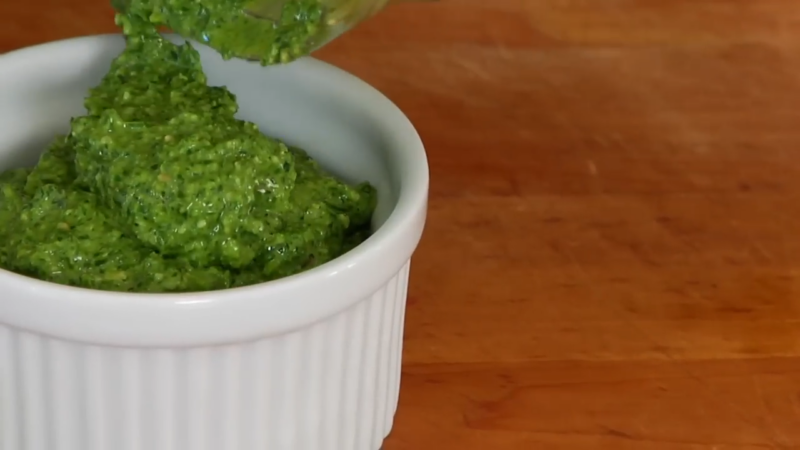
Share Post:
We can all agree that Pesto can elevate any dish, from pasta to sandwiches. This beginner-friendly recipe makes a healthier version of classic pesto by using nutrient-dense ingredients and skipping excessive oil.
Perfect for meal preppers, vegans, or anyone looking to incorporate more greens into their diet!
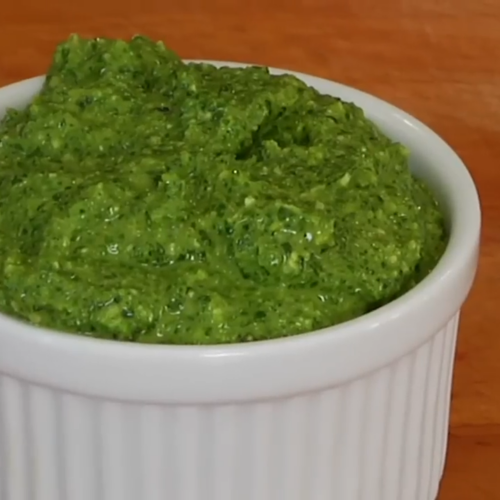
Table of Contents
ToggleHealthy Homemade Pesto
Equipment
- 1 Blender or food processor
- 1 Measuring cups and spoons
- 1 Spatula
Ingredients
- 2 cups fresh basil leaves packed
- 1 cup spinach or kale (optional, for added nutrients)
- 1/4 cup walnuts or almonds raw
- 2 cloves garlic peeled
- 1/4 cup nutritional yeast
- 2 tbsp fresh lemon juice
- 1/4 cup olive oil extra-virgin
- 2–3 tbsp water (to adjust consistency)
- 1/2 teaspoon sea salt
- 1/4 teaspoon freshly ground black pepper
Instructions
- Prep Your Ingredients:Wash and dry the basil and optional spinach/kale. Peel the garlic cloves.Tip: Swap basil with arugula or parsley for a different flavor profile.Add to Blender:Place basil, spinach/kale, nuts, garlic, nutritional yeast, lemon juice, olive oil, salt, and pepper into the blender or food processor.Tip: Use sunflower seeds or pumpkin seeds as a nut-free alternative.
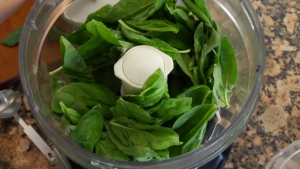
- Blend Until Smooth:Pulse for about 30 seconds, then blend until smooth. Scrape down the sides as needed.
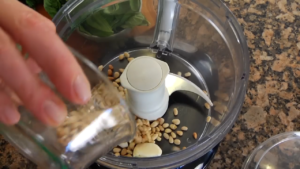
- Adjust Consistency:Gradually add water, one tablespoon at a time, blending after each addition until the desired consistency is reached.Tip: Add half an avocado for a creamier texture.
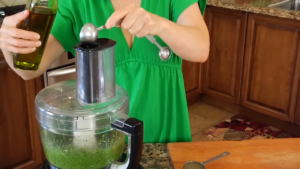
- Taste and Season:Taste the pesto and adjust the salt, pepper, or lemon juice if needed.
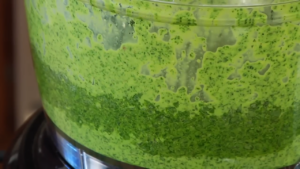
- Store or Serve:Use immediately or transfer to an airtight container and refrigerate for up to 5 days.Tip: Drizzle a thin layer of olive oil on top to prevent discoloration.
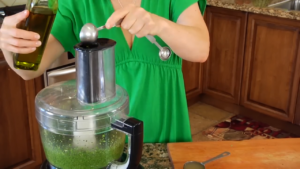
Video
Nutritional Information (Per Serving)
Nutrient
Amount per Serving
Calories
120 kcal
Carbohydrates
3 g
Protein
3 g
Fat
10 g
It’s Really Important to Stir Your Olive Oil
When you blend olive oil using a high-speed processor, it can become emulsified and interact differently with the other ingredients, leading to a change in flavor, often making the pesto taste bitter. This bitterness is due to the squeezing out of polyphenols from the olive oil when it’s overprocessed.
Is It Possible to Freeze Pesto?
Yes, in fact, freezing is a great way to preserve its fresh, vibrant flavors for use all year round. Here’s how to do it properly:
Portion the Pesto
For easier use, portion your pesto into manageable amounts. You can use an ice cube tray to freeze dollops of pesto, which allows you to pop out small portions as needed.
Freeze
Spoon the pesto into the compartments of the ice cube tray. Cover with plastic wrap, pressing it down directly onto the surface of the pesto to prevent air exposure, which can lead to freezer burn and oxidation (turning your pesto brown). Place the tray in the freezer until the pesto is solid.
Store
Once the pesto cubes are frozen, transfer them to a freezer-safe bag or container. Be sure to label it with the date so you can keep track of how long it’s been stored.
Use as Needed
When you’re ready to use your pesto, simply take out the number of cubes you require. Thaw them in the refrigerator or add them directly to hot pasta or other warm dishes, where they will melt into deliciousness.
Final Thoughts
We hope you enjoy this healthy pesto recipe! Feel free to experiment with the ingredients and enjoy your own creations or adaptations.
Related Posts:









